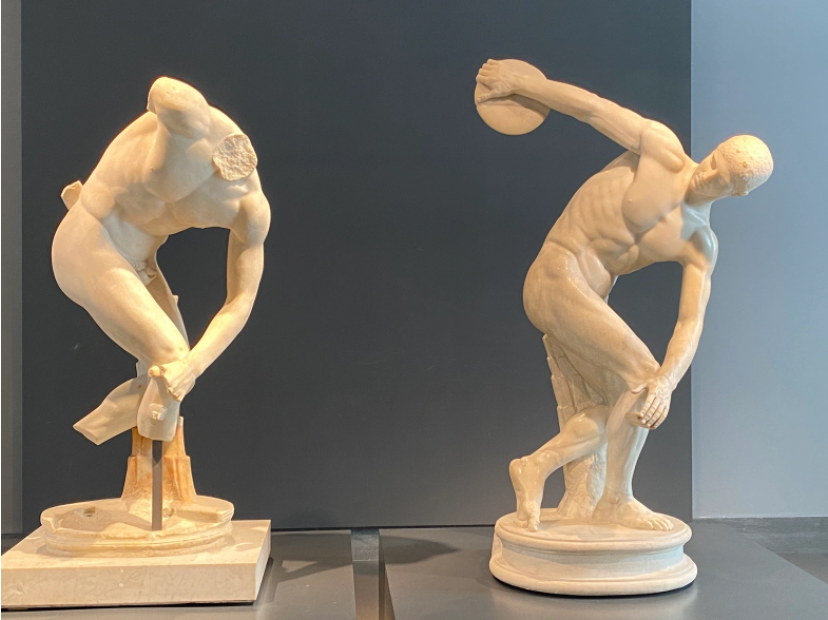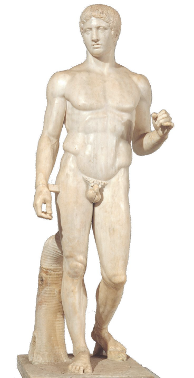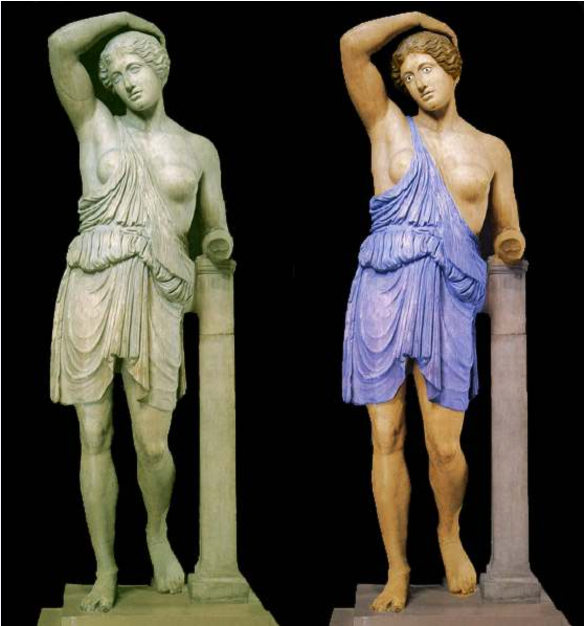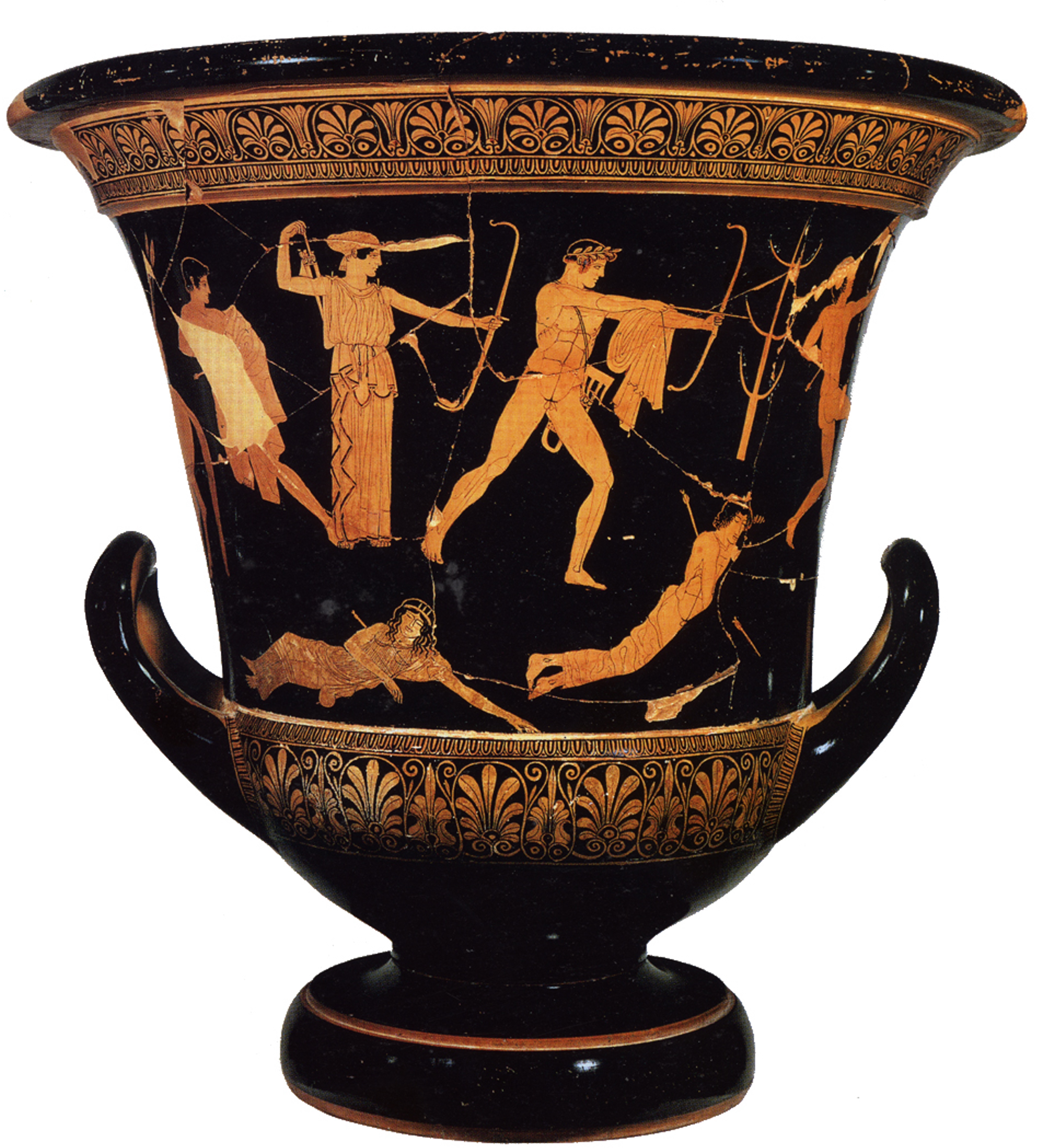Greek art
Myron (480-440 BCE)
Sculptor
worked in bronze
best known his studies of athletes in action
works:
the group of athena and marsyas, originally standing on the Acropolis of Athena
Discobolus
Bronze did not survive, marble copies made in roman time
captured that crucial moment of rest at which one motion has just been completed and another is about to begin
Discobolus

1/13
Earn XP
Description and Tags
CLST Final
Name | Mastery | Learn | Test | Matching | Spaced |
|---|
No study sessions yet.
14 Terms
Myron (480-440 BCE)
Sculptor
worked in bronze
best known his studies of athletes in action
works:
the group of athena and marsyas, originally standing on the Acropolis of Athena
Discobolus
Bronze did not survive, marble copies made in roman time
captured that crucial moment of rest at which one motion has just been completed and another is about to begin
Discobolus

Polyclitus (450 c- 415 bc)
Greek sculptor from the school of Argos
Bronze sculptures of young athletes
Work:
Diadumenus
Doryphrus
Later work known as the Canon
No original works survived, only know through Roman copies
Doryphoros

Canon
a theoretical work that discusses ideal mathematical proportions for the parts of the human body and the proposes for sculpture of the human figure a dynamic counterbalance
Dynamic counterbalance (symmetria)
between the relaxed and tensed body parts and between the directions in which the parts move
Best demonstration: Polyclitus statues
Contrapposto
depiction of the human body with twisting in its vertical axis
Amazon (look like?)

Amazon
original statue probably stood in the precinct of the great temple of Artemis at Ephesos, on the cost of Asia Minor
What sculptors participated in the competition of the Amazons?
Phidias
Polykleitos
Kresilas
What scenes are depicted on the Niobid Krater?
side A
Herakles and Athena join Greek heroes
side b
Apollo and Artemis avenge their mother by slaughtering the children of Niobe who boasted of her superiority
Niobid Krater

What trends characterized sculptures in the fourth century?
Relaxation of the rules of decorum- especially in representation of the gods
Increased individualism in portraitures
Increasing pluralism in the kinds of people who can be represented
Mix-and-match approach to styles